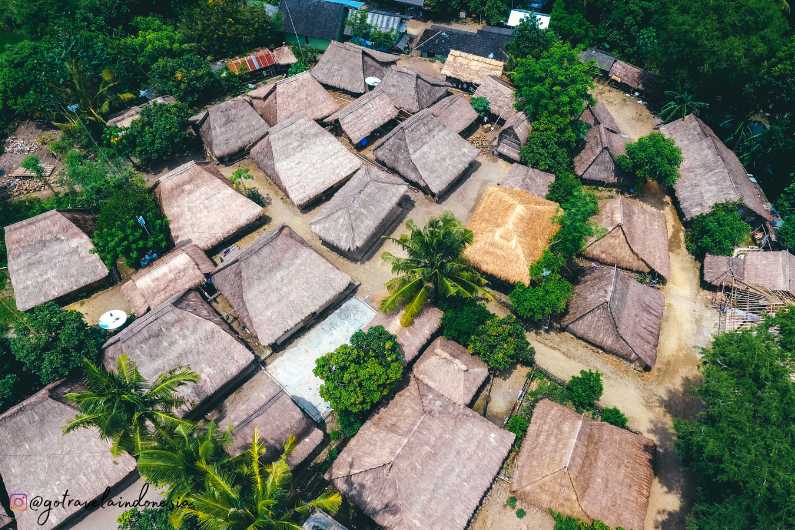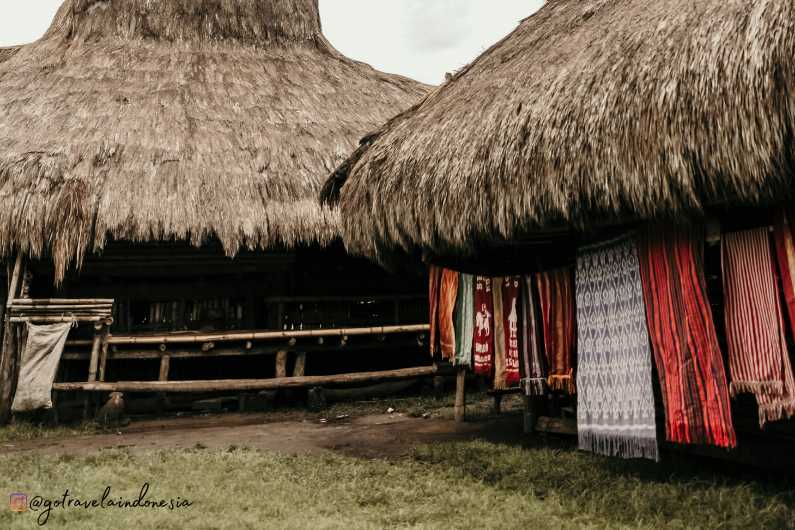Sade Rambitan Traditional Village is a tourist village in the area Lombok.
Sade village is used as a tourist village because in this village the indigenous Sasak Sade tribe of Lombok still adheres to beliefs, cultural values and ancestral customs.
If you visit Lombok, don't forget to visit this village. First, let's find out more about this village.
tour operator & content specialist. Before joining Gotravela, he spent years honing his skills at 'Tourism Industries".

History of Sade Rambitan Traditional Village
Sade Rambitan Traditional Village is a village that has been around for 600 years. This village has been designated as a tourist village since 1989.
In the past, the Sasak Sade tribe adhered to the wektu telu (three times) belief. This tribe performs prayers only at three times. However, at present the Sasak Sade people are mostly fully Muslim.

Sade village has an area of 5.5 hectares and has approximately 150 traditional buildings. Each house is inhabited by one family head and the total population of the village of Sade is approximately 700 residents.
In addition, there are some unique things about the Sasak Sade tribe that you may rarely or do not encounter in other traditional communities. Here are some things that make this indigenous Sasak village unique and worth visiting.
To visit the Sasak Sade traditional village house, travel friends can use lombok airport car rental with us.


Traditional Sasak Sade Traditional Buildings
As explained above, the Sade Sasak tribe is a tribe that still adheres to their principles and customs. Likewise with the buildings in the village of Sade.
The buildings in the village of Sade have the characteristics of traditional Sasak buildings. The existing building has woven bamboo walls and a roof thatch dry with a pole made of wood.
House construction like this makes the house feel cool during the day and warm at night. There are three types of house buildings in Sade village with different designations.
Bale Bonus, is a building where village officials live. Then bale kodong, is a building where newly married couples live and parents who only live to spend their old age. The last one is Bale Farmer, is a house where a family or couple who already has children live.
Rice Husk
In addition to the different uses of the three buildings in Sade village, another uniqueness in the building is the way the building is maintained. In this building, the Sade tribe uses buffalo dung.
The floor of the traditional Sade house is made of a mixture of clay and rice husks. Then for every few weeks or when approaching the traditional ceremony they mix buffalo dung with a little water to clean the floor.
Read later, guys:
- Beautiful Kuranji Beach in West Lombok
- Lombok Kuta Beach Attractions
- Places & Prices of Tour Tickets in Lombok

Then after drying they will rub using a stone or broom. Even with buffalo dung, don't expect it to smell bad. In fact, there is no characteristic smell of buffalo dung at all. It aims to reduce insects and mosquitoes.
Sasak Sade tribe is famous for tribes who prefer to marry people who are still one tribe or one village.
This is seen as cheaper when paying for wedding expenses compared to marrying someone outside Sade Village. Therefore, most residents in Sade Village actually still have kinship relations.
Sasak Sade Cultural Attractions
The Sasak Sade tribe has cultural heritage that is still preserved. When visiting the village of Sade tourism, don't forget to explore the rich culture that exists. Here are some cultural attractions and traditional customs that you can see in Sade Village.

Weaving cloth
Interacting with the indigenous Sasak Sade is one of the attractions in itself. In this Sade Rambitan Traditional Village, visitors can learn how to weave a typical Lombok cloth, namely songket. This songket loom is called Berere.
To complete one songket they take approximately one week. They get the threads of songket fabric by spinning cotton fibers with traditional spinning tools.
For the color of the threads, they use natural ingredients such as turmeric for yellow, Moringa leaves for blue.
See also:
That's about this Sasak Tribe tourist village. Hopefully it can add to your insight. Happy holidays.



